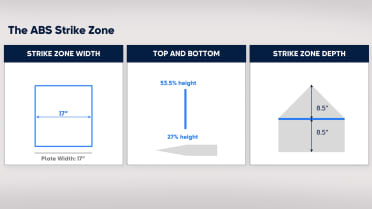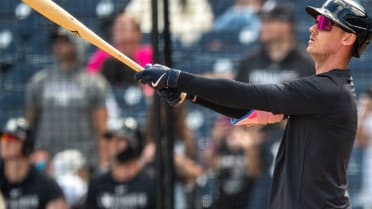Last time Mets won a game like Monday's G1? They reached the World Series
Game 1 of Monday's make-up doubleheader between the Mets and Braves at Truist Park was an instant all-time classic. With an 8-7 victory, the Mets punched their ticket to the postseason with a Wild Card berth. New York also became the only team to play in makeup games with postseason implications after the end of the regular season on multiple occasions.
In 1973, the Mets faced a very similar situation, and it led to a famous "Ya gotta believe!" rallying cry -- and a surprise World Series appearance. Needless to say, this year's club hopes to follow the same roadmap.
Monday’s massive twin bill took place one day shy of exactly 51 years after the Mets took on the Cubs in a makeup game to help determine the winner of the NL East.
The 1973 regular season ended on Sept. 30. On Monday, Oct. 1, the Mets sat atop the division with a record of 81-79, with the Cardinals (81-81) and the Pirates (80-81) right behind them. New York would need to play one or -- if it lost the first game -- two makeup games against the Cubs, while the Pirates would need to play a makeup game against the Padres in order to sort out who would win the division. In the meantime, the Cardinals would have to watch as their playoff hopes hung in the balance.
This year, the Mets and Braves played the roles of the 1973 Mets and the 1973 Pirates, while the D-backs were in the uncomfortable position of watching from afar as their fate was decided in a similar fashion to the ’73 Cardinals.
The symmetry between Monday’s quest for the Mets and the one they faced half a century earlier are stark -- both instances involved road games with one victory needed to secure a postseason berth, and in both instances, the Mets produced a late-season surge to put themselves in position to clinch.
In 1973, the Mets were 6 1/2 games back of the division lead on Aug. 28. They then reeled off wins in 21 of their next 30 games heading into their doubleheader against the Cubs on the Monday after the end of the regular season.
This year, the Mets were four games back of a Wild Card spot on Aug. 28. They then won 19 of their next 27 going into their twin bill against the Braves on the Monday after the end of the regular season.
On Oct. 1, 1973, Tom Seaver took the mound for the Mets in the biggest game of the year to that point and held the Cubs to two runs over the first six innings at Wrigley Field. He ran into trouble to open the seventh -- with New York leading, 6-2, Seaver surrendered a two-run homer by Rick Monday before giving way to reliever Tug McGraw, who threw three scoreless frames from there.
The Mets got just enough offense to advance to the postseason. A solo homer from Cleon Jones in the second inning, a two-run single by Jerry Grote in the fourth, and a Rusty Staub RBI single and John Milner sacrifice fly in the fifth were enough to capture the division flag.
With an 82-79 record (the second game of the doubleheader, which would have been the club’s 162nd game of the year, was not necessary after the Game 1 win), the Mets were in the NL Championship Series against the 99-win Reds. But after shocking the baseball world with the franchise’s first World Series title in 1969, New York had some more surprises in store four years later.
In what was then a five-game NLCS, the Mets defeated Cincinnati and its vaunted lineup, three games to two. New York’s starting pitching was sensational -- Seaver posted a 1.62 ERA over two starts (16 2/3 innings) and the rotation as a whole had an ERA of 1.31.
The run would end in the World Series, which the A’s won in seven games behind an MVP performance from Reggie Jackson. But a Monday makeup game in the space between the regular season and the postseason led to a World Series appearance for the Mets in 1973.
This year’s Mets are hoping to follow the same path, except with a different outcome at the very end, one that would end one of baseball’s longest World Series title droughts.
Manny Randhawa is a reporter for MLB.com based in Denver.




